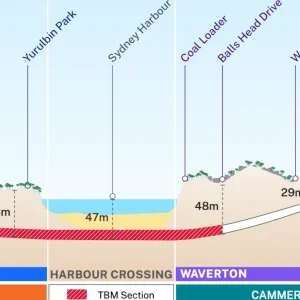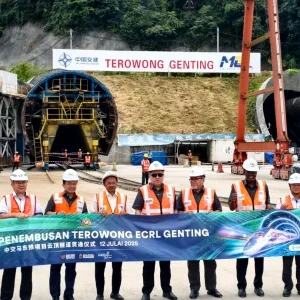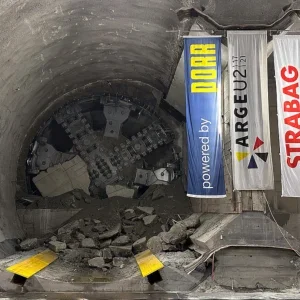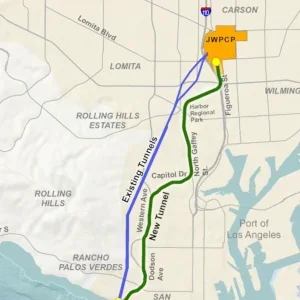During routine checks, extensive cracks were found in a 40m length of 2.14m² reinforced concrete box tunnel at the Bridgeport Harbour coal fired power station in Connecticut, US. The longitudinal cracks at the joints between the upper walls and the crown in the cooling water outfall tunnel had been caused by high water pressure during discharge.
In an emergency repair programme, consulting engineer Spiegal Zamecnic Shah decided to construct a stronger roof and chamfer the joints between the tunnel crown and walls.
Firstly, general contractor Blakeslee Arpaia Chapman (BAC) excavated 2m down to expose the tunnel roof. Using circular saws the roof slab was cut away and working platforms installed inside the open channel. Contractor Jet-Blast Hydrodemolition was then called in to work round the clock for four days to remove concrete from the top of the two walls using a Conjet Robot 362. BAC followed, placing additional reinforcement in the walls prior to casting the new wall tops and the 458mm thick roof slab.
Finally, BAC backfilled the excavation above the tunnel and replaced the ground floor slab, thereby completing the emergency repairs within the strict one month shut down schedule.







